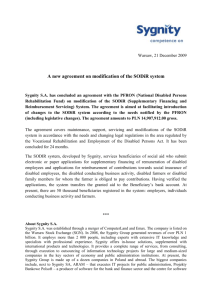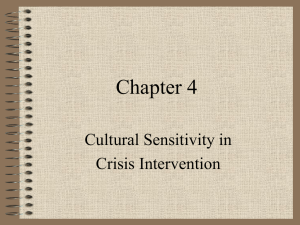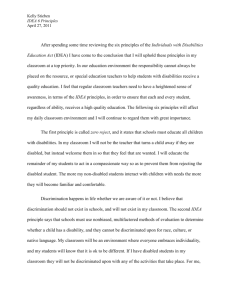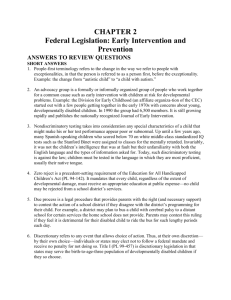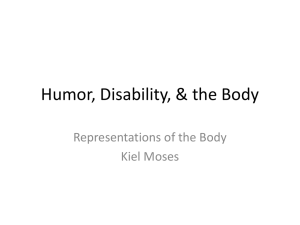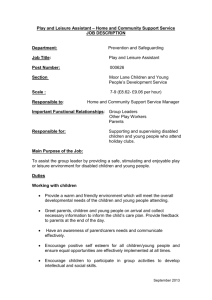Catering For Disabilities
advertisement
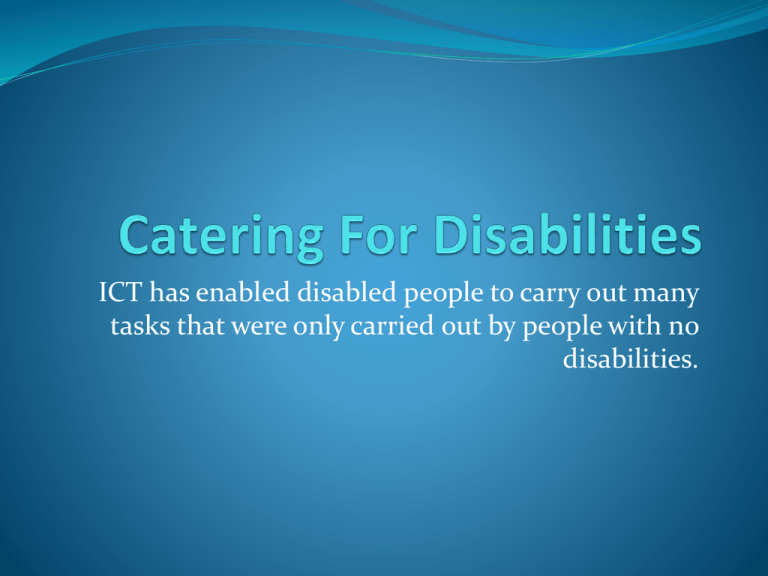
ICT has enabled disabled people to carry out many tasks that were only carried out by people with no disabilities. A list of examples People who are deaf or hard of hearing can now access information using ICT. Instant messaging or webcams can be used. Fonts can be increased for people who have eye problems. People can work from home. Touch screens and voice recognition systems are also used Some PC features in use Sticky keys to avoid having to press two keys at once. Filter keys for a computer to ignore certain repeated key presses. Mouse keys- where the number keypad can be programmed to control the pointer. Changing the appearance of pointers, fonts, menus etc A mouse pointer can be conifigured to leave a trail Some PC features in use Overlay or concept keyboard- This can have much larger keys that can be read by people with sight problems. Head pointer which can detect the movement of the head using cameras. Braille keyboards for the blind Predictive word processors which can be accompanied by voice software. Some PC features in use Speech recognition software using microphones and word processors. Tracker balls which are used with either hands or feet. Joysticks Touch screens where images are used to replace characters. Head wand- this is a wand or rod attached to a headband. This is used by people with limited or no limp movement. Shopping Disabled people find it easier to shop from than to go for shopping. The use of broadband internet access also means that shopping can be done 24/7. Special features can make it easier to read product information. Supermarkets do not at times provide features for the diabled and as a result lose out on a big market. Challenges for the disabled There is at times too much animation on websites. Inconsistent navigation Small font sizes The requirement for specialist browsers Banking Online banking has helped disabled people with eye sight problems and those who are not able to move. People with speech problems/deaf find it easier to bank from home. Bookings Systems Disabled people find it easier to make a booking and choose an appropriate seat. Facilities for the disabled can also be found online. Font can be enlarged. It also saves time. Health Services Online consultations with health professionals can be done. Those who cannot travel or have speech problems can communicate easily online using text messages General health information can also be found. Employment The training of disabled people in ICTs is helping to create employment for them. ICT has generally improved the efficiency of business and created employment for everyone including disabled people. There are many retraining centres dedicated to helping the disabled and employment opportunities have been created for them. Government Some governments have made it mandatory to have websites that also cater for the disabled.



